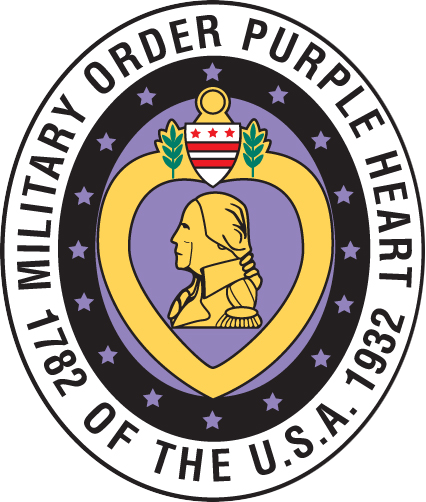Max Noe was born in Uvalde, Texas in 1916 and he was raised in the Lower Rio Grande Valley. His family moved from Rio Hondo to Austin in 1934. Max graduated from Austin High School and went to work for the Post Office. He had five years experience as a postal employee when he entered Army active duty on January 29, 1943. After Basic Training at Camp Robinson in Little Rock, Arkansas, Max was assigned to the 28th Infantry Division and he joined them in training at Carrabelle, Florida. The 28th Division sailed for England on October 8, 1943, arrived safely on October 18th, and was stationed at Tenby in Wales.
Max Noe was a Sergeant in APO 28 (APO stands for Army Post Office), the postal section of the division headquarters when the division went ashore at Omaha Beach about ten days after the D-Day invasion. The divisions first combat and first battle casualties happened at Avaranches, and from there they continued to fight across France. They were 20 miles south of Paris when the city was liberated, and the 28th Division had the good fortune to be selected to parade through the city. Max Noe was part of that parade and witnessed the ecstatic reception given by the emotionally expressive people of Paris. He later said that if there was any glory in the warthat was it.
Their next major battle was in the Huertgen forest, on the Belgium-German border, in late November and the 28th Infantry Division suffered 4,000 casualties. Following that, the division was sent to the Ardennes in the belief that it would be a quiet sector where they could gradually recuperate their strength. The division was spread over a 25 mile front. In early December the weather turned bad, planes were grounded, reconnaissance was impossible. On December 16, 1944, the Germans achieved complete surprise, launching a massive offensive, the Battle of the Bulge had begun.
The Germans sent nine divisions pouring through the thinly spread 28th Infantry Division. At the Headquarters near Wiltz, Luxemberg, the Division Commander, Major General Norman D. Cota, hurriedly formed a provisional company to mount a defense. All available men from the band, the MPs, the admin clerks, and the APO; a total of 118 soldiers including Sgt Noe, all under command of the Captain who was the director of the division band, were ordered to dig in on the side of the mountain just outside Wiltz. There was only one machine gun and Max Noe was the only one among them to have qualified on the weapon. There was no tripod, so he used an apple box for a gun rest. As General Cota left the area, he radioed back, Headquarters is pulling back to Bastogne. Hold out to the last man! and after a long pause, Good bye and good luck. Max says that must have been one of historys most discouraging pep talks.
This rag-tag outfit held the Germans out of Wiltz for 18 hours. Sgt. Noes machine gun bounced all over the place and if he did hit a tank it was like throwing rocks on a tin barn. The Germans then overwhelmed the defenders with mortar fire and a force of paratroopers. All the men but Max and two others were dead, captured or incapacitated by wounds.
The three survivors slipped into the forest and managed to evade the German troops. They moved through the Ardennes in an attempt to work their way back to the Allied lines. They were without food and their only way to rest in the snow was to try and sleep leaning against a tree on the hillside. After three days they had nearly reached U.S. troops. They reached the outskirts of Bastogne, but were then detected by the Germans as they tried to make a dash through the lines, and taken prisoner.
The three men were briefly interrogated and then force marched over 200 miles back to Germany, crossing the Rhine River at Koblenz. Noes best break was that he was captured just five months before the German surrender. Even so, he lost 60 pounds, and Army doctors later told him he would have been dead in another month. He remembers Christmas dinner was a cracker and a spoonful of syrup. At one point, he went five days without food. Another time, Noe and six other prisoners feasted on a single loaf of bread, drawing lots to see who would get to eat the slightly larger slices. He dreamed about food, and says he didnt laugh the whole time he was a prisoner.
On April 11, 1945, with heavy bombing all around Braunschweig, Germany, prison camp where he was being held, Noes German guards fled the scene. The next day, the prisoners saw Allied tanks tear through the camp gate. The POWs that went streaming out to meet them were the crummiest wretches imaginable. Max Noe ran up to one big GI, about 6 foot 2 inches, grabbed him around the neck and just hugged him for a long time. Noe said, It was the happiest day of my life.
Max then spent two months in the 250th General Hospital in Nancy, France before he was well enough to be returned to the United States, where he arrived on July 8, 1945. He was home in Austin on two months convalescent leave on V-J Day, and Max says, I went down to Congress Avenue and celebrated the end of the war with everybody else in town.
Max Noe was discharged from the Army in October 1945 and went back to work at the Post Office. He retired with 41 years of service from the U.S. Postal Service on December 31, 1976 as the Postmaster of Austin. He has been a life member of the Military Order of the Purple Heart since signing up shortly after Chapter 1919 was chartered in Austin.
